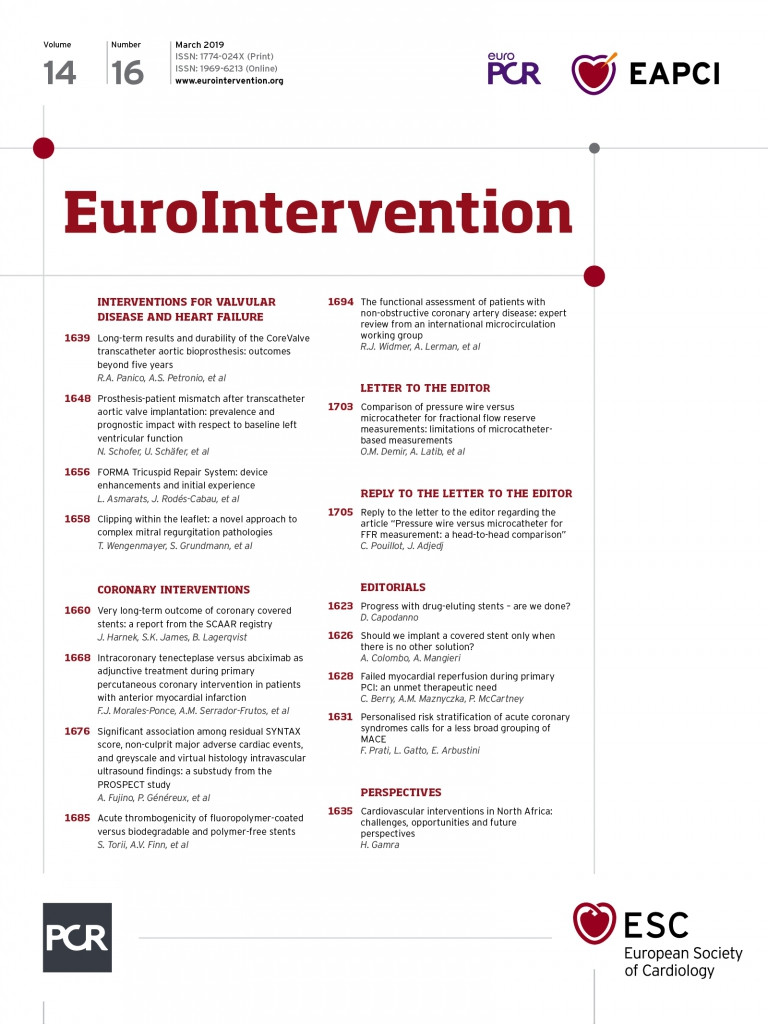
Emerging technologies to measure fractional flow reserve (FFR) are increasing. Novel technologies suggest potential advantages to promote the use of new devices or software.
As interventional cardiologists we have to focus on the results of these new technologies and on their reproducibility among different studies. As mentioned by Demir et al in their letter, FFR measured with a microcatheter (FFRMC) compared with a pressure wire (FFRW) has been evaluated by our team1, and also by Menon et al2, Wijntjens et al3, Fearon et al4 and Ali et al5. These studies found a difference between FFRW and FFRMC of 0.83±0.07 vs. 0.80±0.10 in 77 patients, 0.81±0.11 vs. 0.79±0.12 in 58 patients, 0.86±0.06 vs. 0.82±0.07 in 28 patients, 0.81 vs. 0.83 in 169 patients and 0.83±0.09 vs. 0.78±0.11 in 74 patients, respectively. All previous studies, including 406 patients, agreed that FFRMC overestimates FFR compared to FFRW. We believe that the reproducibility of the results of five studies with a similar design, in which each lesion was measured twice with both devices, is reliable enough to support our conclusion. We strictly included all consecutive patients with FFR measurement indications and reference diameter above 2.5 mm1. Therefore, without selection bias we had lower crossability with FFRMC compared to pressure wire in most calcified and tortuous vessels. We disagree with the message from Demir et al which is trying to get to the following simplest conclusion: if the mean difference is 0.03 therefore it should be negligible because misclassification could mostly concern patients in the “diagnostic grey zone”. It is important to note two points from these five studies. First, standard deviations are between 0.06 and 0.12 and, second, the underlying mechanism is probably due to the larger size of the FFRMC device compared to FFRW. Similar to our study1, Fearon et al4 and Ali et al5 suggest that reference diameter is an independent predictor of FFRMC overestimation. Therefore, we believe that increasing the FFRMC cut-off value or limiting the problem of inaccuracy of FFRMC to patients within the “grey zone” for clinical decision making could not be adopted from currently available data. However, we believe that FFRMC in a large vessel could be similar and accurate (difference close to zero with FFRW), while in a smaller vessel it might have a higher degree of inaccuracy (difference of 0.10 and more). It is therefore unfortunate, from our point of view, that the main potential advantage of FFRMC, which is easy and accurate investigation of lesions that a pressure wire cannot cross, has become its weakest point.
Conflict of interest statement
The author has no conflicts of interest to declare.

